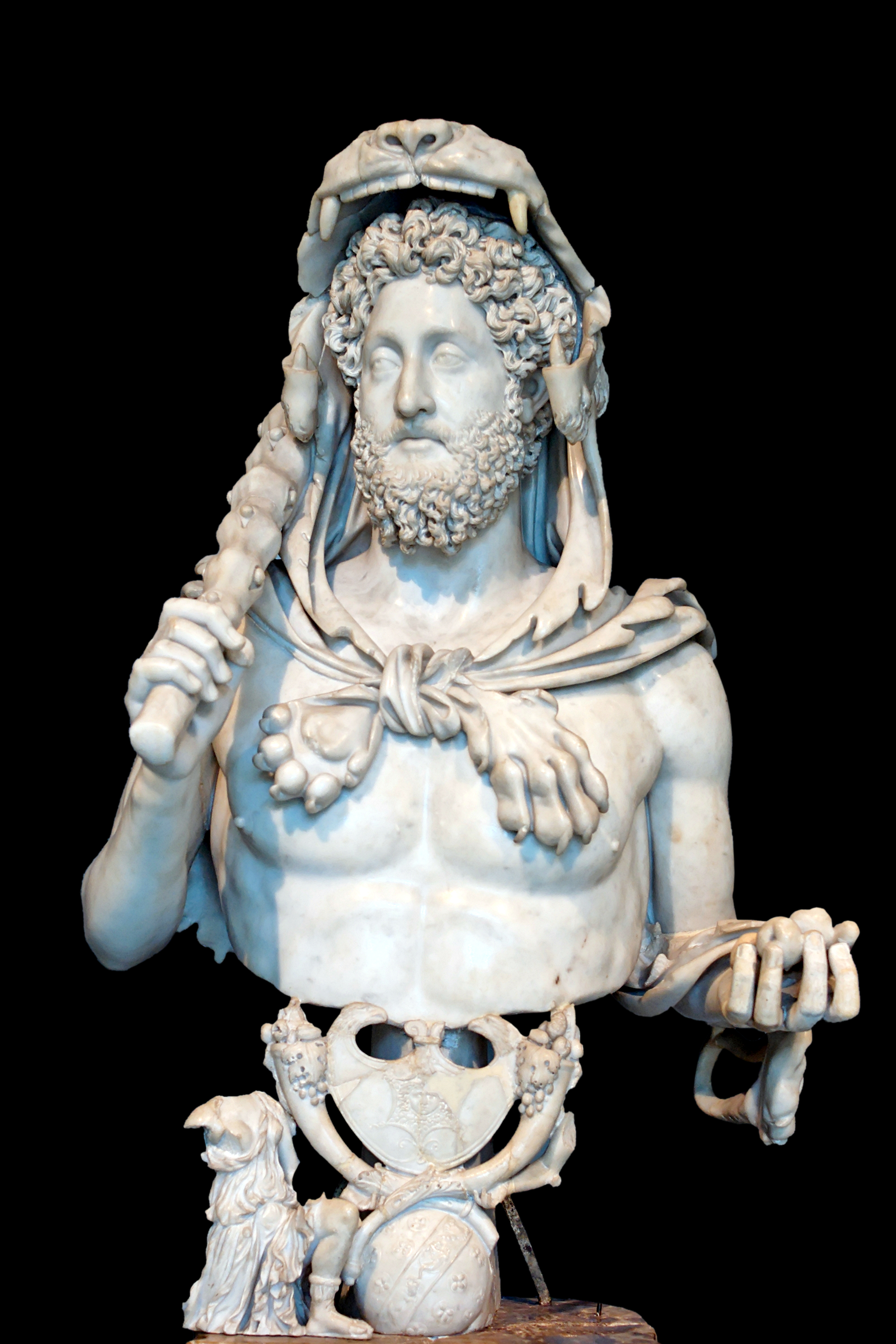This evening I was flipping through some textbooks on ancient art. I am currently developing curriculum for an introductory course on ancient art, and I am hoping to find a textbook which will enable me to teach the course through a case-study approach (similar to the other introductory course which is taught at my university). (That being said, if anyone has some textbook or curriculum recommendations, please let me know!)
 Anyhow, while looking through one textbook, I came across an image of Emperor Commodus. The marble bust immediately caught my eye, since Commodus is represented as the god Hercules (c. AD 191-92, Capitoline Museum, shown right). I’ve seen Roman emperors to assume godlike characteristics (Augustus’ youthful statue from Primaporta (original dated ca. 20 BC) can be interpreted as a propagandistic statement – Augustus liked to advertise that he was the son of a god, since his father Caesar had been made a god after his death.) However, I’ve never seen another Roman emperor assume the lion skin and bear club of Hercules in portraiture. Commodus even carries the apples of Hesperides in his hands, which is a reference to one of Hercules’ most difficult labors.
Anyhow, while looking through one textbook, I came across an image of Emperor Commodus. The marble bust immediately caught my eye, since Commodus is represented as the god Hercules (c. AD 191-92, Capitoline Museum, shown right). I’ve seen Roman emperors to assume godlike characteristics (Augustus’ youthful statue from Primaporta (original dated ca. 20 BC) can be interpreted as a propagandistic statement – Augustus liked to advertise that he was the son of a god, since his father Caesar had been made a god after his death.) However, I’ve never seen another Roman emperor assume the lion skin and bear club of Hercules in portraiture. Commodus even carries the apples of Hesperides in his hands, which is a reference to one of Hercules’ most difficult labors.
Some sources list that Hercules was the particular patron of Commodus, while others go as far as to say that Commodus was thought to be a reincarnation of the god Hercules.1 It seems like Emperor Commodus was quite the character; he even fought in the arena in order to display his herculean strength and physical prowess.
Cassius Dio’s Roman History records that “a vast number of statues” were erected of Commodus dressed in Herculean garb. You can see an example of Commodus depicted as a young Hercules here. Cassius Dio also mentions that Commodus replaced Nero’s head on the Colossus statue with his own head, and then added a bronze club and lion to the statue so it would look like Hercules.
Commodus was pretty invested in maintaining his Herculean image, perhaps even to his detriment, since he didn’t seem to be a very good ruler. What about you? If you wanted to be depicted as a mythological god, who would you choose? I wouldn’t mind being depicted as Artemis/Diana.
1 For mention of Hercules as Commodus’ patron, see Marina Vaizey, Art: The Critic’s Choice
2 Cassius Dio, Roman History (published in Vol. IX of the Loeb Classical Library edition, 1927), available online here. If you’re interested in reading more about Commodus, I would suggest that you read the whole chapter located at the link.
3 Ibid. (New York: The Ivy Press Limited, 1999), 20.







